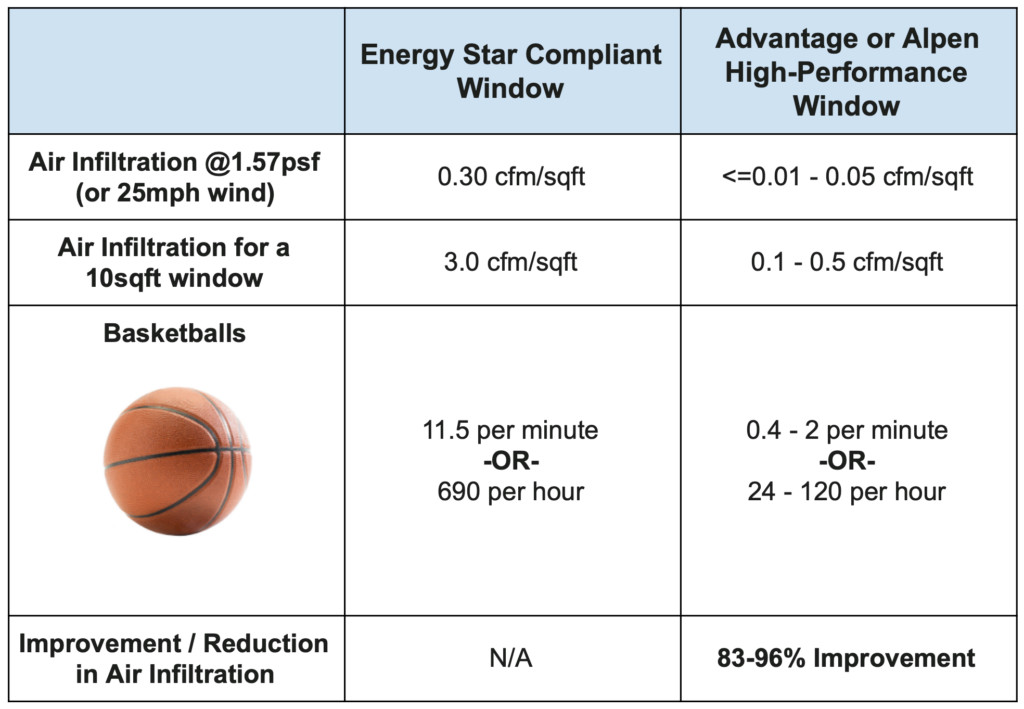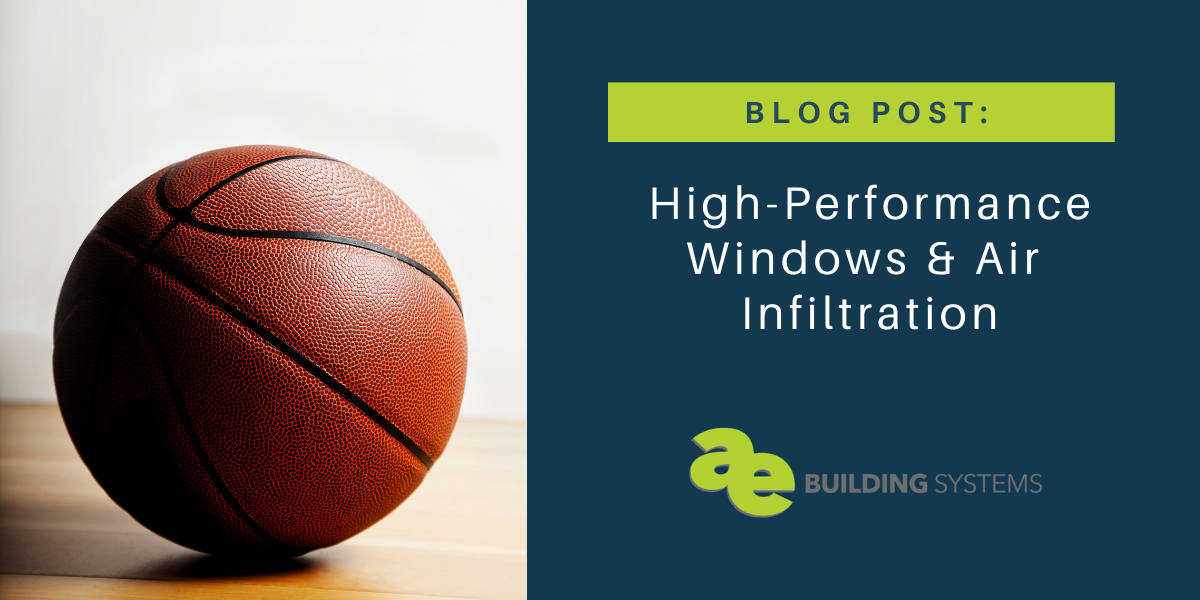Generally speaking, windows are the weakest link in our building envelopes. When evaluating windows, often the insulative specifications (R-value / U-factor) are the primary focus. Just as important are the air infiltration rates. Code-built homes often lose 20 to 40% of the heat in the home through air infiltration. Windows and doors are a significant source of this heat loss.
For windows and doors, air infiltration is defined as a volume of air (cubic feet per minute) divided by the window area (in square feet) when subjected to a 25mph wind (blowing perpendicular to the window) – Cubic feet per minute per square foot at 25mph windspeed. As of 2017, window manufacturers were only required to report air infiltration numbers if the windows were to be labeled Energy Star.
An Energy Star Compliant window allows air infiltration to be as high as 0.30 cfm/sq ft
Now some quick math for a 10sqft window:
0.30cfm/sqft x 10sqft = 3.0cfm total air infiltration allowed.
To think about this another way: A basketball has a volume of 0.26 cubic feet.
3.0cfm / .26 cubic feet = 11.5 basketballs per minute or 690 basketballs per hour from a single window. Imagine how much air this equals for a typical home of many windows.
Now let’s compare an Advantage or Alpen High-Performance windows to an Energy Star compliant unit:

While we can’t prevent a basketball from being thrown through a window, let’s talk about how Advantage and Alpen prevent these air infiltration “basketballs”.
- Gaskets & Seals – While fixed units have the best infiltration rates, operable units must also be considered. Any sliding window uses a friction type gasket material to seal the window for air and weather. Over time this material can break down and will not perform as well as a compression seal. Consider awnings, casements, and tilt-turns which use compression seals rather than hung or sliders that use a friction type gasket. We always recommend against sliders and hungs and for fixed, casements, awnings, and tilt-turns.
- Hardware – Consider the window hardware used to seal the windows. With a friction fit, there isn’t a practical way to better seal a window other than applying slight pressure or replacing the weatherstripping. With a compression style, minor hardware adjustments can be made to place more or less pressure on the seals, and while weatherstripping can be replaced, typically minor adjustments are all that is required to achieve an excellent air seal.
High-Performance windows help create comfortable, quiet, high-performing homes conserving energy for future generations. We are burning through our fossil fuel resources rapidly and bad windows and doors are a primary source of wasted energy use. If you have any questions about air infiltration or other aspects of high-performance windows, please call us at 720.287.4290 or send us an email. info@aebuildingsystems.com


